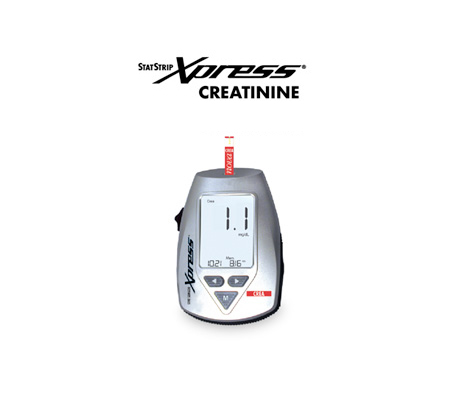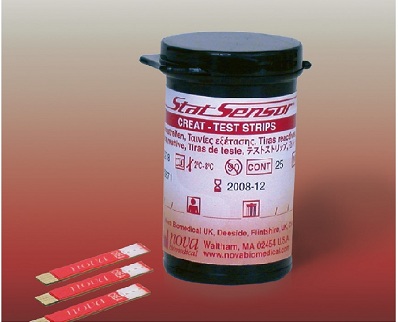

No use of any Abbott trademark, trade name, or trade dress in this site may be made without the prior written authorization of Abbott, except to identify the product or services of the company. Unless otherwise specified, all product and service names appearing in this Internet site are trademarks owned by or licensed to Abbott, its subsidiaries or affiliates.
#CREATININE ISTAT VENOUS SOFTWARE#
Optional Advanced Quality Features and STAT Notes help integrate test results into your facility’s software to streamline information management. The i-STAT 1 can connect to multiple data management systems including Abbott Info HQ ® or AEGISPOC TM - to integrate seamlessly with your Laboratory Information System, Electronic Medical Records or both to help you manage test results, operators and devices. Testing and obtaining time-sensitive results at the patient’s side streamlines the testing process and eliminates process steps, handoffs and delays to help reduce errors, enable rapid decision-making, and optimize patient-care. Provides accurate results in approximately 2 minutes for most tests. Clear and comprehensive instructions help the operator through the testing process. Testing can be performed in 4 simple steps at the patient’s side with only 2 to 3 drops of whole blood. Each test cartridge has a unique combination of biosensors to suit a wide range of clinical needs.

#CREATININE ISTAT VENOUS PORTABLE#
Published by Elsevier B.V.Single-use i-STAT test cartridges offer a broad menu of tests on a single, portable platform. PoC creatinine testing is a practical method of ensuring renal function and is feasible in the radiology environment.Ĭomputed tomography Contrast media Creatinine Patient safety Point of care.Ĭopyright © 2019. Five patients had an elevated creatinine (≥25% from baseline) post contrast administration, but no instances of PC-AKI (≥50% from baseline) were identified. The constant error between the Abbott i-STAT PoC scan-day measurements and the laboratory scan-day measurements was -3.71 (95% CI: -6.41 to -0.50). Six PoC test failures were recorded on the scan day. The majority of patients (n=281/300 93.7%) fell in the same risk category based on previous and scan-day blood results. Participants were also invited to attend for follow up PoC and laboratory bloods tests at 48-72 h.ġ4 patients (4.7%) had a scan-day eGFR below 45mL/min/1.73m2, all identified through screening. Comparison was made against with previous baseline blood tests obtained within the preceding 3 months, as required by the study site. Participants completed a screening questionnaire for co-morbidities linked to kidney dysfunction and consented to have a PoC and laboratory creatinine tests. Over an eight-week period 300 adult outpatients attending a UK CT department for contrast-enhanced scans were approached. This study has evaluated the feasibility of implementing a screening form in conjunction with point of care (PoC) creatinine testing as a method to manage the risks of post contrast acute kidney injury (PC-AKI) within the CT imaging pathway. Although the risks associated with iodinated contrast administration are acknowledged to be very low, screening of kidney function prior to administration is still standard practice in many hospitals.


 0 kommentar(er)
0 kommentar(er)
